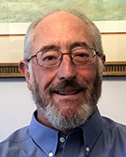
Lawrence S. Goldstein
University of California, San Diego
|
Primary Section: 22, Cellular and Developmental Biology Secondary Section: 24, Cellular and Molecular Neuroscience Membership Type:
Member
(elected 2020)
|
Biosketch
Lawrence S.B. Goldstein is a Cell Biologist, Geneticist and Neuroscientist recognized for his work on molecular motors and the role of molecular transport pathways in neurodegenerative disease. Goldstein was born in Buffalo, New York and grew up in Thousand Oaks, California. He graduated from UC San Diego with a degree in Biology in 1976 and from the University of Washington with a Ph. D. in Genetics in 1980. He was a postdoctoral fellow in Cell Biology at University of Colorado Boulder and MIT. He joined the faculty in Cell and Developmental Biology at Harvard University in 1984 where he was promoted to Full Professor with tenure in 1990. He returned to UC San Diego and the Howard Hughes Medical Institute in 1993. He is currently a Professor of Cellular and Molecular Medicine and of Neurosciences at UC San Diego. In collaboration with faculty and administrative colleagues he launched the UC San Diego Stem Cell program, the Sanford Consortium for Regenerative Medicine and the Sanford Stem Cell Clinical Center. He has received the Public Service Award from the American Society for Cell Biology and has had a Public Policy Fellowship named for him by the International Society for Stem Cell Research. He is a member of the American Academy of Arts and Sciences and the National Academy of Sciences.
Research Interests
Lawrence S.B. Goldstein’s laboratory is interested in the roles that cholesterol and molecular movement pathways play in the development of Alzheimers Disease (AD). Early work on kinesin molecular motor protein structure and function led to the discovery that eukaryotic genomes encode multiple members of a kinesin superfamily characterized by “shared” motor domains conserved in evolution. These conserved motor domains are attached to a diversity of tail domains that play an important role in specifying distinct molecular movement functions. Work in Drosophila neurons and in the mouse led to the realization that blockage of movement pathways in neurons may play an important role in a variety of diseases including neurodegenerative diseases such as AD. This work led directly to the realization that further dissection of the movement pathways that play a role in AD would require experiments in human neurons, which have many distinct aspects of biochemistry not found in other organisms. Analysis of human neurons made from human induced pluripotent stem cells with AD genomes or AD mutations revealed that molecular movement and cholesterol control pathways are upstream of late AD phenotypes.

